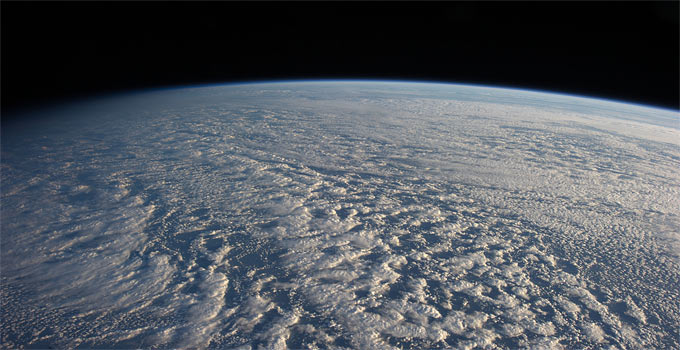Grand Solar Minimum – Research Astrophysicist Dr. Zharkova Warns…
Baby, It’s Gonna Be Cold Outside
– Guest post by “Anony Mee” –
It’s an exciting time to be a research astrophysicist. Our ability to see deep into the galaxy and closely at our celestial neighbors improves every year.
AI has exponentially increased computational ability; and we are on the threshold of witnessing a Grand Solar Minimum.
This is an article mainly discussing Dr. Valentina Zharkova’s talk October 2018, before the Global Warming Policy Foundation.
Professor Valentina Zharkova:
The Solar Magnetic Field And The Terrestrial Climate
She also did a follow-on summary interview with the grand solar minimum channel which can be seen on Youtube.
The Scientist – Dr. Zharkova
Dr. Zharkova is a theoretical astrophysicist currently working in solar plasma physics at Northumbria University in England.
In 2005, she completed a project for the EU and created a set of Solar Features Catalogs for solar cycle 23 (1996-2005). Given this compendium of data, Dr. Zharkova and her team set about finding out what conclusions could be drawn by examining this data.
The Science
“Using a summary curve of two eigen vectors of solar magnetic field oscillations derived from Principal Components Analysis from synoptic maps for solar cycles 21-24 as a proxy of solar activity, we extrapolate this curve backwards three millennia revealing 9 grand cycles lasting 350-400 years each.” (Zharkova et al 2017)
In other words, it’s very complicated.
Zharkova and her team, building layer by layer upon verified research, discovered a method that accurately describes historical solar activity. It can can be used to predict future solar cycles.
In doing so, they found, in 2015, that a Grand Solar Minimum would begin in 2020. It will last until 2053-2055.
Further research since then has found that their conclusions regarding the solar dynamo are verified not only with their science, which is replicable, but also by research conducted independently by helioseismologists.
They also described a solar oscillation caused by the sun’s response to the largest planets which produces yet another terrestrial heating and cooling cycle lasting around 2,600 years. We are currently in the heating phase of that cycle which will continue for another 500 years.
Impact of Cosmic Waves
Solar activity, like sunspots, flares, and solar winds, serves to push cosmic radiation away from the Earth. [Ken adds: ‘Cosmic radiation’ mainly originates outside the solar system]
The solar magnetic field also protects the solar system from bombardment by cosmic rays.
During the Grand Solar Minimum the solar magnetic field which drives solar activity will be significantly reduced, thus allowing more cosmic particles to reach the Earth.
A study released in 2018 showed that cosmic radiation readings since 2013, as we approached the upcoming Grand Solar Minimum, were 30% higher than readings in previous solar cycles.
Recent research indicates that the electric charge of cosmic rays striking the atmosphere forms aerosols (clusters of molecules) that become seeds around which water droplets condense and create clouds. Dr. Zharkova expects significant cloud cover during the Grand Solar Minimum.
Possible Associated Volcanism
Observation shows that volcanic activity somewhat mirrors solar activity.
Research indicates that solar activity results in the bombardment of the planet with a variety of particles and rays.
It is postulated that these impacts cause imperceptible movements in Earth’s crust that very slightly relieve tectonic stress. This is why most of the largest volcanic explosions have occurred during periods of lower solar activity.
If this Grand Solar Minimum has the extremely low levels of solar activity predicted, the possibility of large volcanic eruption increases, which would bring the discharge of fine particulates into the atmosphere. This would further increase cloud formation and cooling.
The Conclusions
– The Earth is in a warming cycle that man can do nothing about.
– During the Grand Solar Minimum, solar irradiance will decrease only slightly.
– The solar magnetic field will be reduced with about 70% fewer sunspots thus temperature will decrease and cloud cover will increase.
– Due to lower temperature and increased cloud cover, Dr. Zharkova predicts a shortage of vegetation period from 2028 to 2032 and recommends inter-governmental efforts to create a stock of food to feed people and animals and prevent disaster.
– After the Grand Solar Minimum, things will “return to normal.”
The Controversy
The IPCC, a group of scientists that supports the belief in human-caused accelerated climate change, while disparaging much of this research, never-the-less reduced its temperature rise prediction by about 60% a few years ago in reaction to it.
Dr. Zharkova’s response to her detractors has been “well, it’s very near so we will see who is correct”. It is inevitable that all those for whom climate variation is an article of political faith will declare that the upcoming troubles associated with the Grand Solar Minimum are the result of human activity. Dr. Zharkova states unequivocally that this will happen whether or not there are people.
Tin hat folks will shout about a coming mini Ice Age. Dr. Zharkova predicts a weaker and shorter minimum than Maunder’s of 1640 to 1715.
The Preppers
We often discuss the possibility of this or that disaster and that is why we prepare. I believe that this prediction is much less speculative.
I most likely won’t live to see the end of next year’s Grand Solar Minimum. But our next generation and their kids and grandkids most likely will live through it.
I think it behooves us to prepare as best we can to survive the cold and the clouds, and the reduced agricultural production, and to have our progeny come out okay the other side. How shall we accomplish this? What do you think?
P.S. – Shout out to Mrs. USMCBG and others who have kept a focus on this issue.
– by ‘Anony Mee’

